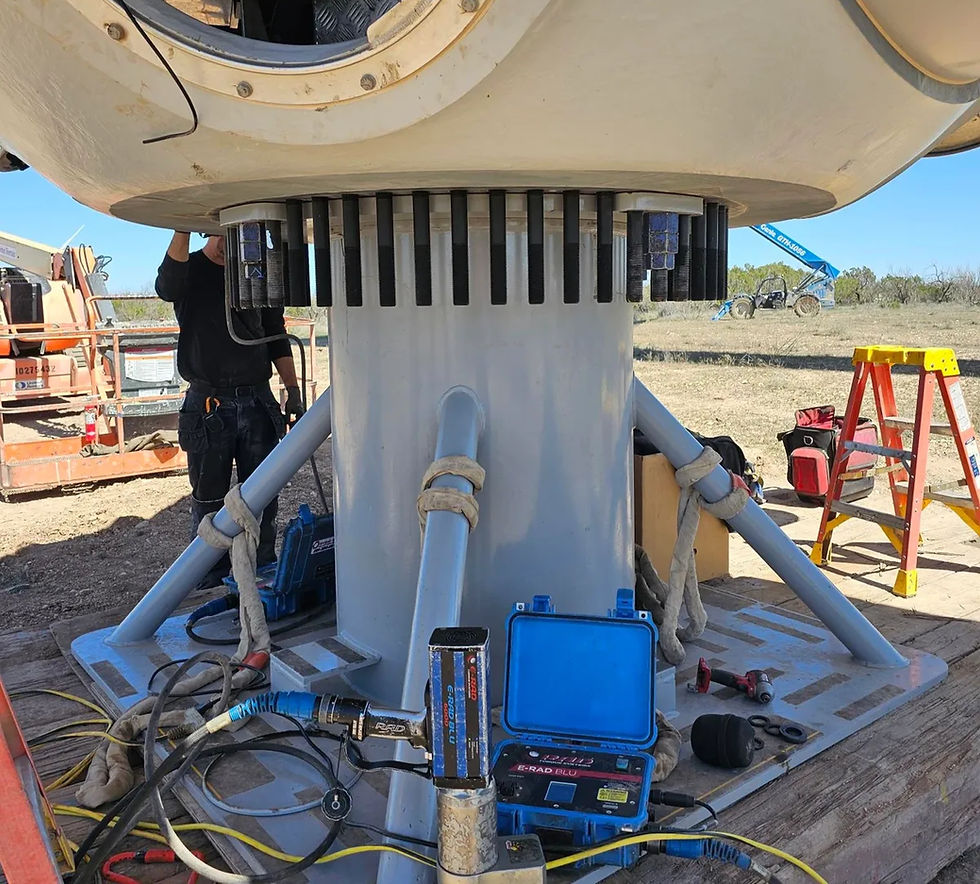Choosing the Right Torque Tool for Wind Energy and Safety
- Gregrey Majors
- Nov 16, 2024
- 3 min read
Wind energy is one of the fastest-growing sources of renewable energy, playing a vital role in the transition to a cleaner and more sustainable future. For technicians and engineers working in the wind power sector, safety and precision are of utmost importance. One key element in achieving both is selecting the correct torque tool for the job. With massive turbines positioned high above ground level, every component must be assembled and maintained to exact specifications to ensure peak performance and safety. But how do you choose the right torque tool for wind energy applications?

Understanding Torque Tools and Their Role in Wind Energy
Wind turbines are complex machines made up of thousands of components, ranging from the tower and nacelle to the rotor and blade assemblies. Each of these parts must be fastened with precision, and that means using the right torque tool for installation and maintenance. Torque tools are essential to tighten bolts and ensure connections are secure, minimizing the risk of accidents or costly maintenance down the line.
In the wind energy industry, bolts can be enormous and are subjected to extreme loads. This makes proper torque application absolutely critical. With high-altitude work environments and demanding operational conditions, torque tools not only need to be powerful, but also reliable, ergonomic, and capable of preventing over- or under-tightening.
Key Considerations When Selecting a Torque Tool
Choosing the right torque tool can make a huge difference in efficiency and safety. Here are some essential factors to consider:
1. Torque Range and Accuracy
Wind turbine bolts require precise torque values, often reaching into the thousands of foot-pounds. Using a torque tool with the right range and high accuracy is crucial to achieve the necessary specifications. Tools like hydraulic torque wrenches and high-torque pneumatic tools are often suitable, depending on the specific requirement of the wind turbine components.
2. Type of Torque Tool
Hydraulic Torque Wrenches: These are often used in wind turbine maintenance due to their ability to generate significant force with high precision. They are ideal for tightening large bolts in critical areas like the flange connections between the tower sections or the rotor hub.
Pneumatic Torque Tools: These tools are also common for wind energy applications, offering speed and power. Pneumatic tools are great for repetitive tasks where productivity and efficiency are key.

Electronic Torque Tools: These tools offer portability and ease of use, making them ideal for wind turbine maintenance where technicians are often working in tight spaces or at heights.
3. Portability and Ergonomics
Wind turbine maintenance frequently involves working in confined, elevated spaces. Choosing a torque tool that is lightweight, portable, and easy to handle is important to reduce technician fatigue and minimize the risk of injury. Electric and battery-powered torque tools are often preferred for their portability and ease of operation, especially when technicians need to climb ladders or work inside nacelles.
4. Safety Features
Safety is paramount in wind turbine maintenance. Tools that prevent over-tightening also contribute to the integrity of the turbine components, ensuring that connections hold up under the immense stress they will experience.
5. Calibration and Maintenance
For wind energy applications, maintaining the accuracy of torque tools is crucial. Regular calibration and maintenance ensure the tools remain reliable and perform to specifications, preventing costly errors or component failures. Choose torque tools from reputable manufacturers who offer calibration services and ensure that your tools are up to date.
Why the Right Torque Tool Matters for Safety
Using the proper torque tool isn't just about efficiency—it's about safety. The harsh environmental conditions, high altitudes, and complex nature of wind turbine maintenance require technicians to work in a secure and controlled manner. Improperly torqued bolts can lead to catastrophic failure, causing significant downtime, expensive repairs, and potential injuries.
When selecting torque tools for wind energy, make sure to consider the specific needs of each job, including torque requirements, tool weight, and safety features. A well-chosen torque tool helps ensure the turbine runs efficiently while keeping everyone safe.

Wind energy is a critical part of the renewable energy landscape, and keeping turbines running smoothly relies heavily on proper maintenance practices. Choosing the right torque tool plays a significant role in ensuring the structural integrity and safety of these massive structures. By focusing on torque range, tool type, portability, and safety features, wind energy technicians can select the best tool for the job and contribute to a safer and more sustainable energy future.
Interested in learning more about our torque solutions for wind energy applications? Visit thetorqking.com to explore our range of high-performance torque tools designed specifically for the renewable energy sector.




Comments